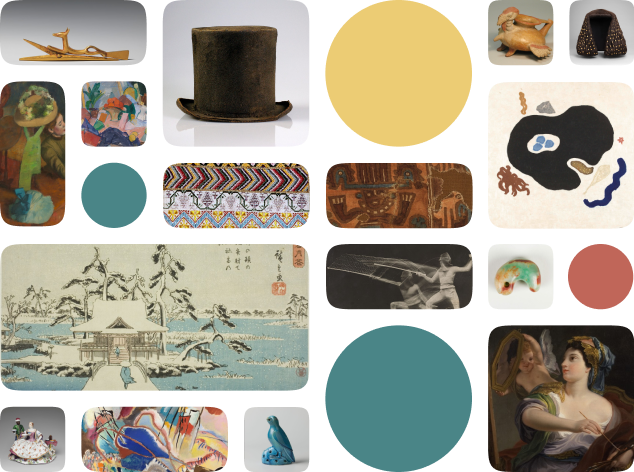Saber
Creator Name
Cultural Context
Date
Source
About the work
This sword is a tour of the great empires of early-modern Eurasia. Mughals made the 18th century jade grip. The curved steel blade is likely Persian in origin. The Ottomans traded or captured these elements, and Ottoman swordsmiths crafted the gold guard. By the early 1900s, the sword was in an Istanbul treasury. Swordsmiths from Islamic empires decorated swords with Arabic calligraphy invoking Allah and legendary kings to protect the user. On this blade, in gold kufic calligraphy is the Muslim proclamation of faith in Allah. It quotes from Quranic verse 2:255, proclaiming the might of Allah. On the reverse of the blade, the maker stamped the Seal of Solomon, a six-pointed star with protective power. Meanwhile, an Ottoman artisan wrote in naskhi script on the guard, “Sultan, son of a Sultan, Sultan Sulaiman Khan.” This inscription doesn’t necessarily indicate the Sultan who owned the sword. It could, instead, be a way for the user to invoke the Sultan’s power. On the reverse, the sword maker has written, in Arabic, “the name of God most compassionate and merciful.”
Metropolitan Museum of Art Object Description
Saber
Work details
"--" = no data available
Title
Creator
Worktype
Cultural Context
Material
Dimensions
Technique
--
Language
Date
Provenance
Style Period
--
Rights
Inscription
Location
Source
Subjects
Topic
Curationist Metadata Contributors
All Works in Curationist’s archives can be reproduced and used freely. How to attribute this Work:
Unknown, Saber, 18th–19th century. Metropolitan Museum of Art. This sword is a tour of the great empires of early-modern Eurasia. Public Domain.
Help us improve this content!
Let our archivists know if you have something to add.
Save this work.
Start an account to add this work to your personal curated collection.
